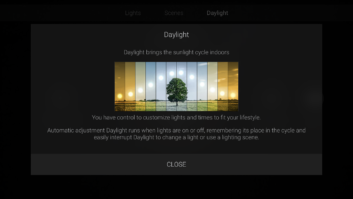
Just over a year ago, with the implementation of EN54, the new European fire safety standard, firmly under way, IE asked market leaders in the PA/VA sector about the probable effects of the new directives. Would the regulations stimulate or stifle the market? The broad consensus was that we could expect a race for certification as manufacturers sought a first-mover advantage, accompanied by a move from specifiers towards sourcing compliant kit well before the deadline of April 2011. However, there were concerns that the costs of certification could rule smaller manufacturers out of the market and might be passed on to customers in the form of higher prices.
With the cut-off date now imminent, have those predictions proved correct? And, more importantly, what do installers and specifiers need to know about EN54 part 16 (components for fire alarm voice alarm systems and VACIE – voice alarm control and indicating equipment) and part 24 (loudspeakers)?
“The race is happening,” believes Nils Schaechtele, product manager for Dynacord’s permanent installation portfolio. “Every manufacturer that has certification is trying to make as much profit out of it as possible.”
TOA Europe’s sales director, Wolfgang Pein, agrees: “The brand that has already got certification is the preferred brand for future planning. Early certification gives us a better position in the market – we are more involved in upcoming projects.” TOA has already been quick off the blocks, announcing an EN54-compliant installation at the Frankfurt Opern Turm (Opera Tower) back in February 2010.
The danger for those slower off the mark, believes his colleague Brett Downing, sales and marketing director for TOA UK, is that “testing houses across Europe are going to be maxed out and [that] will delay [latecomers] getting products to market”.
But while Alison Cousins, marketing manager for Baldwin Boxall, concedes that “there has been a rush for companies to gain compliance”, she also notes concerns about companies self-certifying or using unapproved testing facilities. Indeed, with testing being a long-winded and pricey affair – and given the limited number of authorised testing houses – there are several companies still in the process, especially for new product releases.
“Baldwin Boxall expects certification towards the end of December,” she says. “All our voice alarm system products will be certified by March 2011. We delayed testing because we were introducing new products to the range and wanted to ensure that all current products are compliant.”
This, she adds, has not hindered sales. “Consultants and customers have been satisfied with this reply when enquiring about compliance. Although some manufacturers have certification we have not witnessed this as being an advantage.”
@page_break@
Meeting the deadline
“If there has been a first-mover advantage,” says Neil Voce, MD of Ateïs UK, “it hasn’t been to us, because we are still finalising our certification. It would seem at this stage that everyone is content provided that the products will be ready in time for the deadline.”
That is no surprise says Anthony Smith, MD of Current Thinking, who sits on several standards committees. “It’s a popular misconception that EN54-16 and EN54-24 are not due to take effect until 2011. In fact they came into force in 2008 – the three-year crossover period was to allow manufacturers and test houses to catch up. No test houses gained approval as notified bodies on EN54-16 till 2010.”
The race for certification, he believes, has happened “to a certain extent, but the delay in notified bodies and the scale of the requirements has tempered this; also the EU’s failure to implement the construction products regulation (now expected in 2013) will delay the rush.”
It’s not just a question of whether manufacturers can gain certification in time but whether they can afford it. “The cost of certification is high,” says Smith, who was not the only interviewee to liken it to a licence to print money. “However, it is necessary. Manufacturers and salesmen have failed time and again to regulate themselves, as we’ve seen with the blatant sales of PA systems as VA. We are lucky (or the public is) that none of these systems have led to the loss of life.”
“Sure, certification means extra costs,” agrees Martijn van Overveld, product marketing manager for Bosch’s PA/evac systems. “But Bosch sees the new product standards as of utmost importance for the safety of public and staff in a hazardous situation. With EN54 it is not a choice whether to get products certified; if you want to be able to install systems that will work at any time in every situation you’ll need to ensure that your products comply.”
“Getting products through the testing process needs careful consideration,” says Downing. “The resources that you have to implement before even getting product to the testing stage is daunting enough with R&D engineers, production and special tooling, etc. Then you have the final test and hope it gets approved – if not, do not pass ‘Go’ and do not collect.
“Smaller companies will have a problem funding this and it’s a shame because some of them offer unique and bespoke items that are perfect for the application. But, if you want to stay in the VA business and you are serious about it you have no choice: pay your money and get certified, it’s as simple as that.”
And how much are we talking about? “At the moment the pure certification cost for a VA system is around €70,000,” says Pein, “but only as long as the system passes all the tests without problems – otherwise the cost can easily increase. It is not easy to pass all the tests because they are new for the audio industry. Perhaps in five years, when people are more familiar with these tests they will have been considered in the design and development stage.” And, though some notified bodies are currently charging through the nose, it is Pein’s opinion that the cost of testing will come down.
@page_break@
Passing on costs
Few of those asked were prepared to state categorically that prices would rise as a result – “Baldwin Boxall has opted to absorb the costs into overheads,” says Cousins; “Bosch will not forward certification costs to its customers,” says van Overveld; “Most smaller manufacturers don’t have the certification yet,” says Schaechtele. “Prices are still stable.”
But there was an underlying expectation that the outlay would have to be recouped at some stage. As Voce puts it: “I know that not all loudspeaker manufacturers are putting all their different types of loudspeakers through, but for the EN54-16 players, we have to do complete systems or nothing, so we’re in for the whole nine yards. Obviously prices will go up to pay for certification – whether this is shown as an obvious premium or it just filters in quietly, we’ll need to wait and see.”
That raises a further point: while there’s likely to be a reasonable choice of full systems, there will be – at first – a restricted catalogue of CE-certified loudspeakers available to specifiers and installers.
There are, however, genuine fears that while the new standards should lead to safer PA/VA installations, they could, in practice, not only prove to be a barrier to entry for smaller companies but – because retesting is required for any significant change to a system – they could inhibit product improvement too. A year ago there was doubt as to what ‘significant’ meant.
“Certainly we now have clear guidelines on what can be changed, and the answer is ‘very little’!” says Voce. “As such a system will still include the rack and the batteries and so on, and this will limit the integrators in what flexibility is available to them in completing their rack builds and installations.”
“There is no uncertainty: small production modifications, cosmetic alterations, and software modifications within an audited QS system are allowed,” says Smith. “Any addition of functions, change of hardware or interface type requires retesting – which is expensive.”
Others still see room for interpretation. “It depends,” says Downing. “If they are simple modifications in the software etc, these only need to be documented and the testing house will then decide if it needs to be retested or not.”
“When a change can affect the proper working of a system it must be retested,” explains van Overveld. “The question, therefore, is how critical a change is. These are topics that probably will be discussed with the certification bureau that certified the product before.”
These matters, however, are all firmly addressed to (and to be addressed by) the manufacturer. So do specifiers and installers actually have to concern themselves with EN54 parts 16 and 24 beyond checking for a stamp of approval on the kit they’re going to fit?
“Integrators and installers can basically relax because, being product standards, all EN54-xx requirements belong to the manufacturer,” says Pein. “The only thing they have to consider is that after the coexistence period only certified products can be installed. The integrator and installer only have to consider the system design according to the national application standard or minimum according EN 60849, which is still the valid standard for VA systems in the EU.”
“Installers need to know when an EN54-certified system is needed and when it is not,” says Schaechtele, “as not all audio evac systems necessarily need EN54 certification.”
But any suggestion that installers can relax is rejected by Cousins: “Baldwin Boxall believes that audio/acoustic consultants are responsible for ensuring systems comply,” she says. “They should be aware of all regulations and specify accordingly. There is some concern that there is not currently a body which is ‘policing’ this that we are aware of. Who will ensure that systems installed are compliant – who is ultimately responsible?”
@page_break@
Information, please
Manufacturers are generally offering training – “You don’t just buy boxes from us,” says Pein, and others already have awareness programmes in place. Schaechtele points to institutions such as ZVEI (the German Electrical and Electronic Manufacturers’ Association) as a source of information. But there doesn’t seem to be any definitive guidance to installers at an official level.
“It’s a complex subject – it isn’t just about facts, it’s about interpretation,” says Roland Hemming, a consultant, and
co-author (with Richard Northwood) of the only book on the subject currently available (The Installation Europe Guide to Voice Alarm Systems). “There’s no NVQ, though you can buy the standards. But put five people in a room and you’ll get five different opinions. Until we have some example projects we won’t know, but it seems some projects can’t apply – a lot of stadiums, for example.”
Part of the problem is what Steve Jones, also a consultant, terms ‘loopholes’ – although actually they are bona fide exemptions from the regulations – such as a general exemption for self-powered speakers and speakers for ‘special’ applications (whatever ‘special’ might mean). Or the fact that, because of their size, ‘kit systems’ can’t always be tested properly.
“Yes, specifiers are trying to meet product and service directives,” he says, “but the majority of major installations can’t use the CE standard equipment, so best practice is what is happening.”
Both he and Hemming point out that EN54 gives no legal or moral guarantee or exemption to installers and specifiers. “There’s too much fuss about the new EN54 and people are forgetting that all the other standards still apply and are just as, or more, important,” says Hemming. “EN54 only shows that the product works but not that the system was designed and installed properly.
“We don’t yet know how seriously the new regulations will be taken – especially with their interpretive nature at local authority level in situations where your risk assessment shows you’ve deviated from the guidelines for good reasons. Buildings are complex – you can’t have a set way to do it.”
And though manufacturers are the ones wrestling with EN54 compliance, ultimately, he reminds installers, this is about more than red tape.
“I’m not convinced that things are that much safer as a result of EN54,” he says. “Conformity does not remove any legal obligations – risk assessments are what’s important. If we mess this up, people might die.”
And that is what the regulations are really all about.
www.ateis-international.com
www.baldwinboxall.co.uk
www.boschsecurity.com
www.current-thinking.com
www.dynacord.de
www.toa.co.uk







